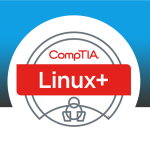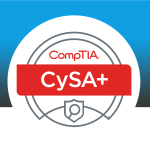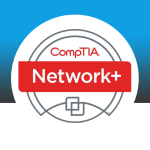Overview
- The CompTIACloud+ course offers knowledge and skills required for working in a Cloud Computing
- This course is intended for IT personnel who need to understand and deliver cloud infrastructures in their organizations. It is recommended for professionals with 2-3 years of work experience in data center administration,
- IT networking and storage or familiarity with hypervisor technology and server virtualization.
- CompTIA Cloud+ certification provides a standard methodology and best practices to securely execute and maintain a cloud deployment.
- Those planning for a career in this field gain a competitive edge once they’re equipped with the practical understanding and proficiency in cloud infrastructure deliver
Benefits
- Understand characteristics and services of cloud environment from a business perspective.
- Understand types of Cloud from a technical perspective.
- Understand the Business value and importance of cloud computing.
- Understand steps to successfully adopt and implement cloud in an enterprise.
- Understand changes and impact on IT service delivery management.
- Understand risks and consequences.
The Main Topic of the Course
- Module 1: Cloud Concepts and Models
- Module 2: Virtualization
- Module 3: Infrastructure
- Module 4: Network Management
- Module 5: Security
- Module 6: Systems Management
- Module 7: Business Continuity in the Cloud
Course Requirements
- It is recommended for professionals with 2-3 years of work experience in data center administration,
Exam requirements
- There are no specific prerequisites required to attend the Exam
LAB Requirement
- There are no specific LAB required to attend the Exam
Course Outlines and Training Plan
Module 1: Cloud Concepts and Models
- Compare and contrast cloud services.
- Compare and contrast cloud delivery models and services
- Summarize cloud characteristics and terms
- Explain object storage concepts.
Module 2: Virtualization
- Explain the differences between hypervisor types
- Install, configure, and manage virtual machines and devices.
- Given a scenario, perform virtual resource migration.
- Explain the benefits of virtualization in a cloud environment.
- Compare and contrast virtual components used to construct a cloud environment.
Module 3: Infrastructure
- Compare and contrast various storage technologies.
- Explain storage configuration concepts.
- Execute storage provisioning
- Given a scenario, implement appropriate network configurations.
- Explain the importance of network optimization.
- Given a scenario, troubleshoot basic network connectivity issues.
- Explain common network protocols, ports, and topologies.
- Explain common hardware resources and features used to enable virtual environments.
Module 4: Network Management
- Given a scenario, implement and use proper resource monitoring techniques.
- Given a scenario, appropriately allocate physical (host) resources using best practices.
- Given a scenario, appropriately allocate virtual (guest) resources using best practices.
- Given a scenario, use appropriate tools for remote access.
Module 5: Security
- Explain network security concepts, tools, and best practices
- Explain storage security concepts, methods, and best practices.
- Compare contrast different encryption technologies and methods
- Identify access control methods.
- Implement guest and host hardening techniques.
Module 6: Systems Management
- Explain policies and procedures as they relate to a cloud environment.
- Given a scenario, diagnose, remediate and optimize physical host performance
- Explain common performance concepts as they relate to the host and the guest.
- Implement appropriate testing techniques when deploying cloud services.
Module 7: Business Continuity in the Cloud
- Compare and contrast disaster recovery methods and concepts.
- Deploy solutions to meet availability requirements.






